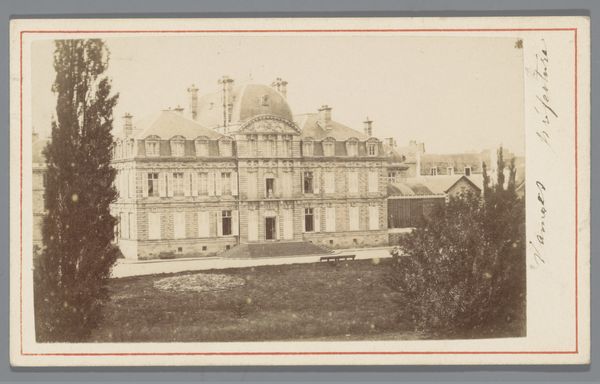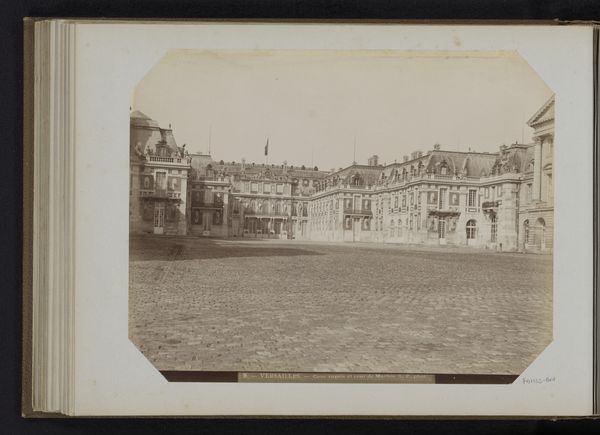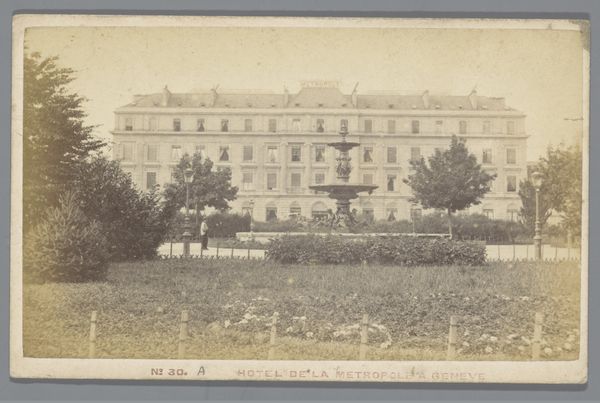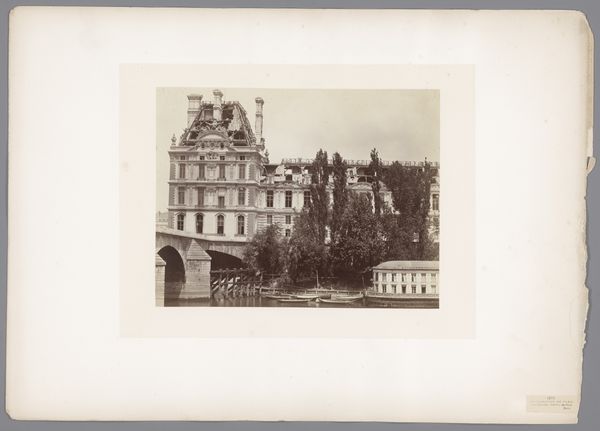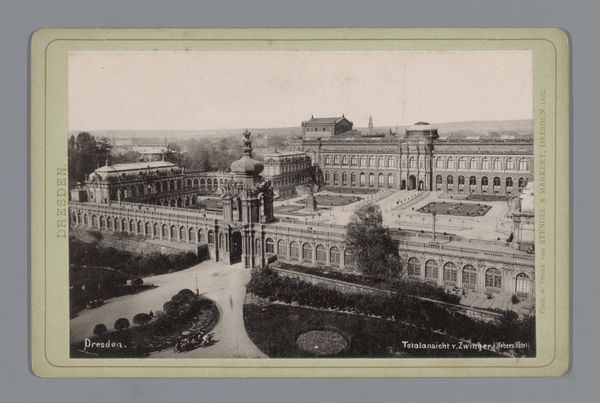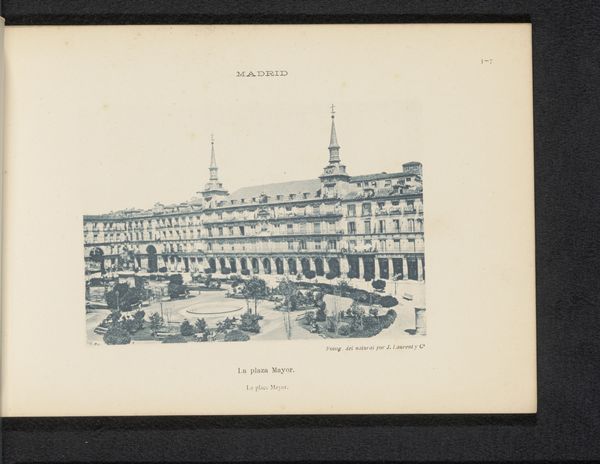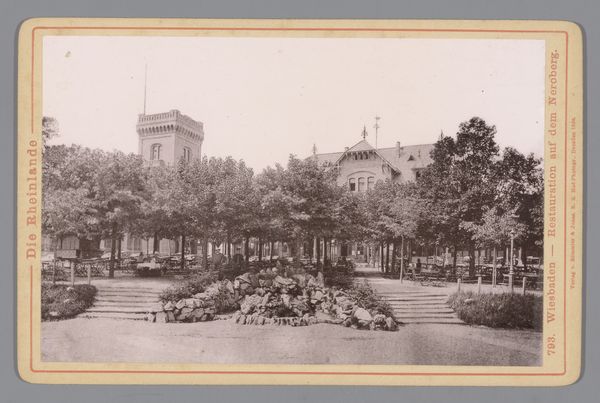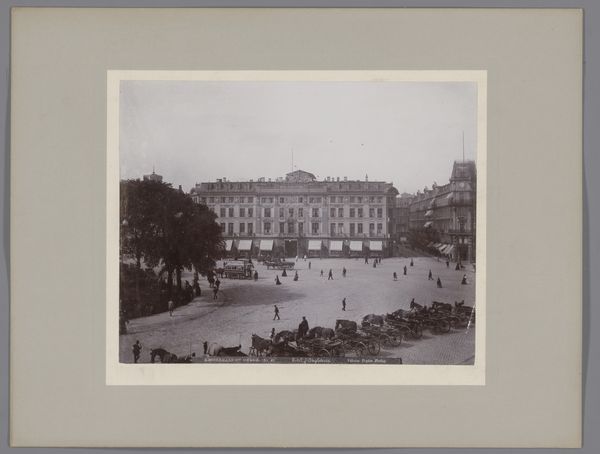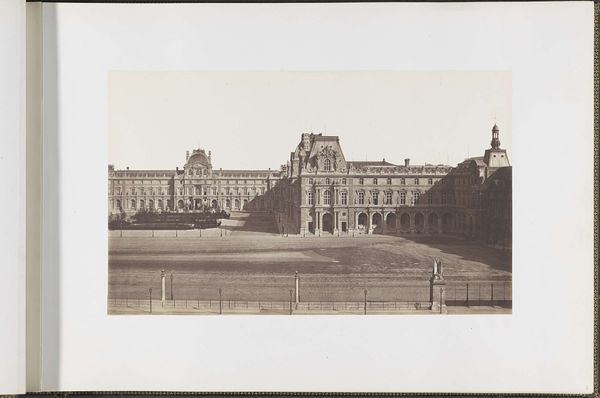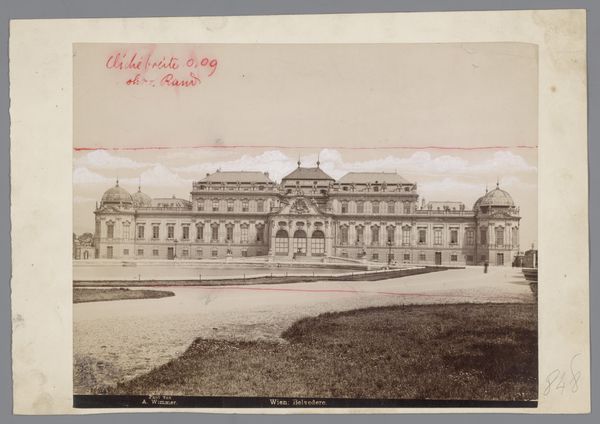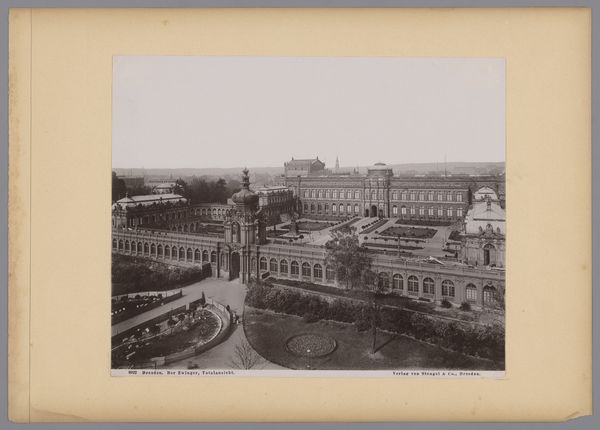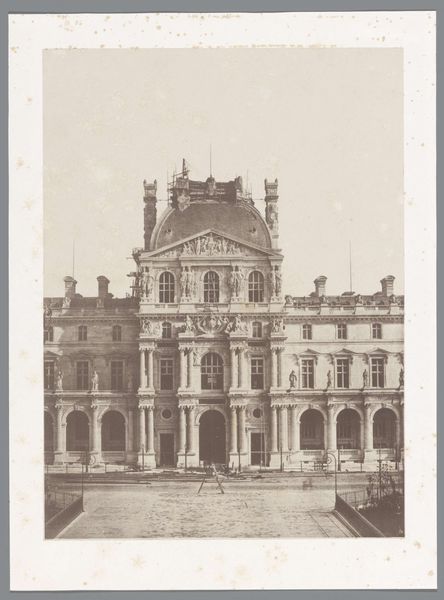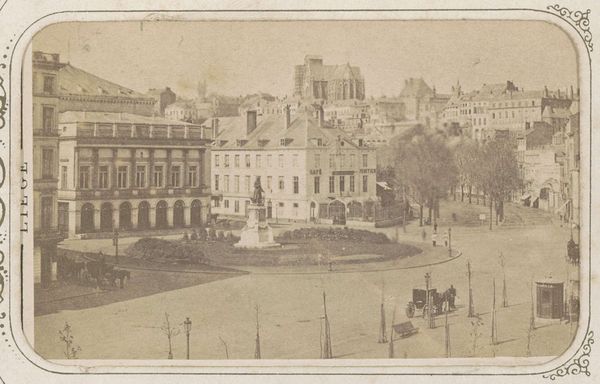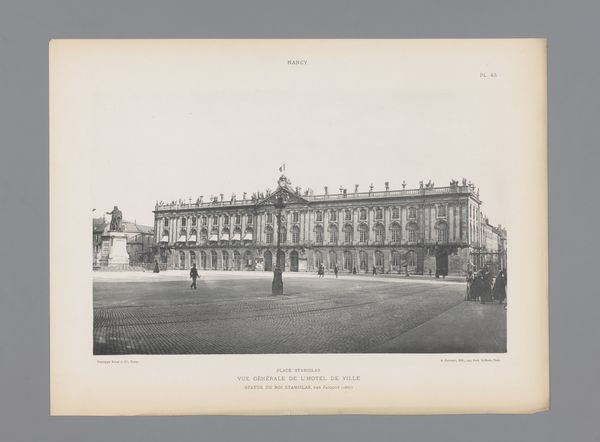
photography, albumen-print, architecture, pendant
#
photography
#
cityscape
#
albumen-print
#
architecture
#
pendant
Dimensions: height 107 mm, width 164 mm
Copyright: Rijks Museum: Open Domain
Editor: This albumen print captures Eugène Carrière's "Stadhuis van Le Havre" in 1893, showcasing the city hall in a soft, almost dreamlike light. What sociopolitical readings can you extract from a photographic piece such as this? Curator: It’s fascinating how Carrière, primarily known as a painter, uses photography to depict Le Havre’s city hall. Considering this was taken in 1893, a time of significant social change and growing industrialization in France, the photograph seems to present a carefully constructed image of civic pride and stability. But what is it really communicating? Editor: It does feel constructed. Almost too perfect. Curator: Exactly! Think about Le Havre as a port city, a site of exchange, immigration, and colonial activity. How might this image of the city hall, a symbol of power and governance, function to project a certain narrative, one that potentially obscures the lived experiences of those marginalized by these processes? Who has access to the city hall versus who remains at the periphery? Editor: So, the image, while seemingly benign, is actively participating in a larger conversation about power dynamics within the city itself. A photographic gaze that perpetuates the dominant narratives. Curator: Precisely! By looking beyond the aesthetic qualities, we begin to unearth the complex relationships between art, power, and social realities. Even the medium itself, photography, played a role in documenting and shaping perceptions of urban space and civic identity. Editor: I hadn't considered how much this seemingly simple image is involved in the politics of representation! Thanks for that reading. Curator: Of course. Always consider who benefits from this presentation.
Comments
No comments
Be the first to comment and join the conversation on the ultimate creative platform.
